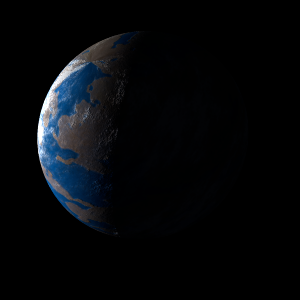|
|
Space Astro
|
Info for exoplanet "Nyuge-he"
| Scientific (actual) data |
|---|
| Name | Kepler-125 b |
| Planet status | Confirmed |
| Radius | 0.211 |
| Orbital period | 4.16439 |
| Semi major axis | 0.041 |
| Discovered | 2014 |
| Updated | 2021-02-05 |
| Tconj | 2455000 |
| Impact parameter | 0.03 |
| Publication | Announced on a website |
| Detection type | Primary Transit |
| Alternate names | 2MASS J19530194+4736178 b, K00251.01, KIC 10489206 b, KOI-251 b, KOI-251.01, WISE J195301.95+473617.7 b |
| Star name | Kepler-125 |
| Right ascension | 298.26° |
| Declination | 47.6° |
| Mag j | 12.484 |
| Mag h | 11.869 |
| Mag k | 11.682 |
| Star distance | 184.34 |
| Star metallicity | 0.126 |
| Star mass | 0.55 |
| Star radius | 0.51 |
| Star sp type | M1 V |
| Star temperature | 3810 |
| Star alternate names | 2MASS J19530194+4736178, KIC 10489206, KOI-251, WISE J195301.95+473617.7 |
| Wikipedia article | Kepler-125 b |
Back
| |
| Fictional info (?) |
|---|
| Suggested name | Nyuge-he |
| Planet type | Hot planet |
| As seen from Kepler-125, in a frame of reference that rotates with the orbital motion, it appears to rotate only once every two years.
Its north and south poles, therefore, lie where most other planets have their equators. |
| Atmosphere | Carbon monoxide | 99% |
| Ozone | 0.01% |
| Ammonia | 1.0E-6% |
| Atmospheric pressure | 0.0026 bar |
 |
| No known satellites |
| Google search for Nyuge-he |
|
Website by Joachim Michaelis
|
|
|
|